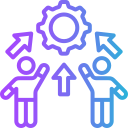
Collaborative Tools for Remote Teams
Collaboration has evolved dramatically with the rise of remote work. As teams are increasingly distributed across cities, countries, and continents, leveraging effective collaborative tools has become central to productivity and success. These digital solutions facilitate communication, coordination, file sharing, and project management beyond the constraints of traditional office spaces. Choosing the right tools empowers remote teams to work seamlessly, build trust, and cultivate a sense of unity despite physical separation. This guide explores the essential collaborative tools, highlights best practices, and delves into ways organizations can foster a thriving remote work culture.
Communication Platforms

Instant Messaging Solutions
Instant messaging platforms allow team members to have quick, informal conversations in real time. With features such as group chats, direct messaging, and customizable notifications, these tools mirror the spontaneity of in-office desk-side discussions. They help reduce email clutter and create a running dialogue that keeps everyone engaged and informed. Whether brainstorming ideas or coordinating lunch breaks, instant messaging keeps the human connection alive for distributed teams. Security, integration capabilities, and ease of use are important factors when implementing these solutions.

Video Conferencing Tools
Face-to-face interaction remains crucial for rapport, even when teams are remote. Video conferencing tools replicate the experience of meetings, interviews, and presentations, enabling direct engagement. They allow teams to read body language, share screens, and collaborate visually, all of which help bridge the distance. High-quality video and audio, reliable connection stability, and user-friendly interfaces contribute to smoother virtual meetings. Scheduling integrations, breakout rooms, and recording features further enhance collaboration, making virtual meetings almost as effective as being together in person.

Asynchronous Communication Apps
Asynchronous communication tools allow team members to exchange updates, feedback, and ideas without needing an immediate response. These are crucial in remote environments, where time zone differences and flexible schedules can make real-time conversations challenging. Asynchronous platforms support messages, video clips, and files that can be reviewed and responded to at each person’s convenience. This not only prevents workflow interruptions but also allows for thoughtful, well-crafted responses. Such tools ensure collaboration continues smoothly regardless of when team members are online, harnessing the global talent pool to its fullest.
Project Management Solutions
Task and Workflow Management
Task management platforms help teams assign responsibilities, set deadlines, and monitor their progress across various projects. With features like Kanban boards, Gantt charts, and checklists, these tools foster clarity on what needs to be done, by whom, and by when. Color-coded labels, calendars, and notifications enhance team awareness, preventing tasks from slipping through the cracks. Such transparency also aids managers in balancing workloads and reallocating resources to meet changing priorities, making remote collaboration more structured and productive.
Agile Collaboration Tools
Agile methodologies are increasingly popular among remote teams for their adaptability and focus on iterative progress. Agile collaboration tools facilitate sprint planning, backlog management, and retrospective meetings, even when participants are scattered globally. Integration of story mapping, point estimation, and analytics simplifies the tracking of deliverables and evolving requirements. These platforms support continuous feedback loops and foster a culture of collaboration, innovation, and rapid response to change, making them invaluable for technology, product, and creative teams alike.
Integrated Documentation Systems
Documentation tools serve as centralized hubs for project plans, meeting notes, and resource libraries. They make it easy for remote teams to create, share, and update information without fear of version conflicts or lost data. Real-time editing, commenting, and advanced search functionality ensure that knowledge is always accessible and up-to-date. These systems promote transparency and reduce the reliance on ad-hoc communication, enabling new team members to onboard quickly and everyone to stay informed, thus ensuring continuity and consistency in a remote setting.
Cloud-Based File Storage
Cloud storage solutions enable remote teams to store their files securely and access them from anywhere with an internet connection. Permissions can be set to ensure that sensitive data is only available to authorized users, and automatic backups help prevent data loss. Advanced synchronization features mean that everyone always has access to the latest version of a file, and real-time updates keep collaborative efforts current. This level of accessibility and reliability is critical for fast-moving projects and geographically dispersed teams.
Secure File Sharing Platforms
Remote teams need to exchange files quickly and securely without the risk of data breaches. Secure file sharing tools encrypt files during transmission and at rest, providing peace of mind for teams handling confidential information. Customizable access controls, expiration dates, and detailed tracking enable organizations to manage document distribution responsibly. Integrations with device-level authentication and audit trails ensure compliance with privacy regulations and internal standards, making secure file sharing an indispensable part of the remote work toolkit.
Collaborative Editing Tools
Collaborative editing platforms allow multiple users to work on the same document, spreadsheet, or presentation simultaneously, with changes reflected in real time. These tools support features like in-line commenting, version history, and suggestion modes, which encourage constructive feedback and iterative improvement. Collaborative editors foster open communication, as team members can leave notes, questions, and annotations directly in the files. This accelerates review cycles, eliminates redundant drafts, and keeps project momentum high, helping teams maintain accuracy and alignment, no matter where they are located.
Time Management and Scheduling
Shared Calendars
Shared calendar tools provide visibility into everyone’s availability, helping teams coordinate meetings and plan project milestones. Features such as integrated reminders, color-coded events, and timezone support eliminate confusion and scheduling conflicts. These calendars often sync with other productivity platforms, ensuring that schedules are always current. By improving transparency and foresight, shared calendars empower remote teams to work cohesively while respecting individual working preferences.
Automated Scheduling Assistants
Automated scheduling assistants streamline the process of finding mutually convenient times for meetings. By scanning team members’ calendars and factoring in different time zones, these tools propose optimal slots, reducing endless email exchanges and miscommunications. They can handle recurring events, suggest buffer times, and even send reminders, making them especially useful for large or cross-functional remote teams. Automated scheduling ensures efficient use of everyone’s time and enhances overall productivity.
Time Tracking Applications
Time tracking applications provide remote teams with insights into how work hours are spent. These tools can automate activity logging, generate detailed reports, and help identify bottlenecks or inefficiencies. For teams billing by the hour or managing multiple projects, accurate time tracking supports transparent invoicing and fair workload distribution. The data provided can be invaluable for improving project planning, setting realistic deadlines, and fostering a culture of accountability and trust among remote employees.
Collaboration and Brainstorming Tools
Virtual Whiteboards
Virtual whiteboards provide a shared canvas for brainstorming, diagramming, and mapping out ideas. With features such as sticky notes, drawing tools, and templates, team members from all over the world can contribute freely and watch ideas unfold collaboratively. These platforms often include integrations with project management and communication tools, making it easy to turn concepts into actionable plans. Virtual whiteboards help bridge the creative gap that physical distance can create, making collaboration spontaneous, visual, and inclusive.
Brainstorming Platforms
Online brainstorming tools facilitate structured, idea-generating sessions for remote teams. With timed rounds, voting mechanisms, and categorization options, these platforms encourage participation from all team members, including those who may be less vocal in traditional meetings. Anonymity options can further support open expression and diverse perspectives. By capturing and organizing all contributions in a central hub, these tools ensure that no idea gets lost and that creativity flourishes in a remote environment.
Mind Mapping Applications
Mind mapping applications enable teams to visualize relationships between ideas, projects, and problems, helping them understand complex challenges and opportunities. These tools support branching, linking, and prioritizing concepts, allowing for dynamic, non-linear exploration. Real-time collaboration features let multiple users expand and refine maps simultaneously, making it easier to align on strategy and next steps. Mind mapping cultivates strategic thinking and provides clarity, transforming abstract brainstorming sessions into tangible action plans.

Workflow Automation Engines
Workflow automation engines enable organizations to design, implement, and manage automated processes that span multiple software tools. These platforms can trigger actions—such as assigning a ticket, updating a project status, or sending an email—based on predefined rules or user actions. Automating repetitive tasks ensures consistent execution and reduces human error, freeing remote team members to focus on more complex activities. Organizations benefit from increased productivity, faster response times, and a smoother flow of information.
Application Integration Services
Application integration services connect disparate tools and platforms, enabling data synchronization and unified workflows. With powerful APIs and drag-and-drop connectors, teams can link project management tools with calendars, messaging platforms with file storage, or CRMs with marketing automation platforms. These integrations eliminate data silos and manual re-entry, ensuring that information flows seamlessly and everyone has access to real-time updates. This holistic approach empowers remote teams to operate as one cohesive unit, regardless of which tools they prefer.
Custom Bot and Script Solutions
Custom bots and scripts bring automation directly into the daily routines of remote teams. Whether sending reminders, generating reports, or facilitating team check-ins, these programmable tools can be tailored to address unique workflow challenges. Bots can act as virtual assistants, monitoring channels for action items or integrating with external services. By embedding automation within chat platforms or other collaborative tools, organizations achieve greater agility, responsiveness, and consistency in remote work execution.
